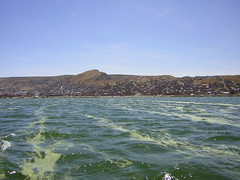They existed in a time before our time, in a world that existed before ours. These beings inhabited the planet long before us and were called the Ñaupa by the indigenous peoples of the central Andes.
Their earth was different from ours. There were no bright days or dark nights, just an ambient glow and a steady temperature. When this began to change and the great Inti, the sun god, brought night and day to the world, the Ñaupa retreated to the tallest mountains to dwell within them.










